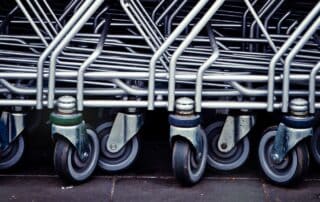Incorrect prognosis from Albert Heijn to ex-C1000 franchisee
On December 3, 2014, the District Court of the Northern Netherlands ruled on a dispute in which the attorneys of the Supermarkets section of Ludwig & Van Dam attorneys (Jeroen Sterk and Alex Dolphijn) represented an ex-C1000 entrepreneur. Albert Heijn issued a prognosis that did not come true. The question that arose was whether the prognosis issued was careless and unsound. In its judgment, the court took into account, among other things, the difference between the price-oriented C1000 formula on the one hand and the service-oriented Albert Heijn formula on the other.
The franchisee successfully operated a C1000 supermarket for many years. Because Jumbo took over competitor C1000 in 2012, the rental rights of a number of C1000 supermarkets have been transferred to Albert Heijn, for example, in consultation with the competition authority. Jumbo also announced that the C1000 formula would cease to exist at some point. Albert Heijn then offered the relevant C1000 entrepreneur a franchise agreement, so that an Albert Heijn supermarket would be built at the location.
Albert Heijn’s franchise agreement was submitted to the franchisee under great (time) pressure. Part of the offer was a forecast of the turnover that the franchisee should be able to achieve under the Albert Heijn formula. Albert Heijn had indicated that the franchisee should also conduct its own investigation and that no rights could be derived from the prognosis.
The court ignores the exclusion of liability (exoneration) for the incorrect or unsound prognosis. Albert Heijn’s statement that the prognosis had been drawn up with the utmost care, as well as the time pressure mean that an appeal to Albert Heijn’s exoneration is of no avail. Given the circumstances, the franchisee could not reasonably be expected to conduct its own investigation.
With regard to the prognosis, it is certain that Albert Heijn based it on turnover below C1000 formula. According to the forecast, the turnover under the Albert Heijn formula would initially decrease slightly, but after three years it would return to the level of operation under the C1000 formula. According to the court, this reasoning is careless and unsound. It is unclear how the price-oriented formula of the C1000 formula manifests itself here compared to Albert Heijn’s service-oriented formula. Apparently this should have been taken into account by Albert Heijn when establishing the prognosis. It turned out that Albert Heijn initially estimated a much lower turnover under the Albert Heijn formula, but only adjusted this upwards because the franchisee achieved more turnover under the C1000 formula than Albert Heijn had expected. This initial forecast had been withheld from the franchisee.
It can be concluded from this that the so-called “bathtub model”, whereby after a dip the turnover achieved under the C1000 formula is achieved again, in this case does not sufficiently take into account the difference between the price-oriented C1000 formula on the one hand and the service-oriented Albert Heijn formula on the other. .
It seems that investigations and internal forecasts have been made with all C1000 franchisees regarding the takeover of C1000 by Jumbo, without their knowledge. As far as is known, these internal forecasts are generally not shared with the C1000 franchisees. There may be more cases in which other forecasts have been or will be presented than an initial internal forecast.
In short, supermarket entrepreneurs who want (or have to) change formulas, or who are faced with disappointing business results after switching to a different formula, should be alert to the prognosis and the way in which it came about.
Further information can be obtained from us.
Mr AW Dolphijn – Franchise lawyer
Ludwig & Van Dam Franchise attorneys, franchise legal advice. Do you want to respond? Mail to dolphijn@ludwigvandam.nl

Other messages
Obligation to sell back at the end of the franchise agreement
Franchise agreements sometimes provide that the franchisee is required to sell back purchased assets at the end of the franchise agreement.
Supermarket letter – 20
Uncertain legal position of Emté franchisees
Position of franchisees in franchisor restructuring
Franchisees must be adequately and generously informed in advance by the franchisor about the content and consequences of (further) agreements...
Interview Franchise+ – mrs. J. Sterk and AW Dolphijn – “Reversal of burden of proof in forecasts approved by court” – February 2018
The new Acquisition Fraud Act indeed appears to be relevant for the franchise industry, according to this article from Franchise+. Alex Dolphijn of Ludwig & Van Dam assists a franchisee in a
Article Franchise & Law No. 7 – Franchise agreement as general terms and conditions
Uniformity of the franchise formula and (therefore also) uniformity of the agreements with the franchisees will often be of great importance to the franchisor.
The franchisee’s customer base
If the partnership between a franchisee and a franchisor ends, the question of who will continue to serve the customers may arise.






